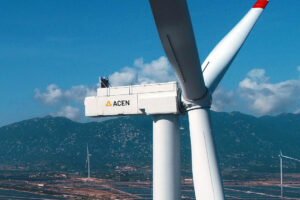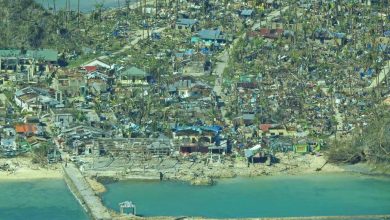Economic growth unlikely to outpace increase in debt

The Philippine economy expanded by 7.4% in the second quarter. — PHILIPPINE STAR/ EDD GUMBAN
WHILE the accumulation of new borrowings by the National Government has been on a decline, there is a concern that Philippine economic growth may not be able to outpace the rise in debt.
“Debt has been declining partly due to better [revenue] collections but also due to slowing government spending,” said ING Bank N.V. Manila Senior Economist Nicholas Antonio T. Mapa, citing the windfall of revenues from the Bureau of Customs (BoC) as a result of the high prices of crude oil imports.
“One problem, however, is that although [the] budget deficit has been falling, prospects for growth are dimming at the same time,” he added in a Viber message. “The more important metric of debt-to-gross domestic product (GDP) ratio may not decline fast enough if we can’t outgrow our debt.”
The Philippine economy expanded by 7.4% in the second quarter, slower than the 12.1% GDP growth a year earlier and 8.2% in the first quarter. GDP growth averaged 7.8% in the first half, above the government’s 6.5-7.5% full-year target.
The debt-to-GDP ratio stood at 62.1% as of the end of the second quarter, still above the 60% threshold prescribed by multilateral lenders and reflects the amount of debt incurred since end-2019 when the ratio stood at just 39.6%.
While the government intends to bring it down to 61.8% by yearend, Mr. Mapa said that accelerating inflation, rising interest rates, and lower government spending may slow economic growth.
“This could leave us open to a credit rating downgrade by at least one of the ratings agencies,” he added.
Rizal Commercial Banking Corp. Chief Economist Michael L. Ricafort said tax collection efforts should be further intensified using existing or new tax laws, paired with more disciplined spending, in order to ease debt-to-GDP ratio and maintain the support of credit rating agencies.
Last month, Moody’s Investors Service kept the Philippines’ “Baa2” credit rating with a “stable” outlook, a grade the country has held since December 2014. In May, S&P Global Ratings also affirmed its “BBB+” long-term credit rating with a “stable” outlook, while Fitch Ratings kept its credit rating at “BBB” and its “negative” outlook.
Outstanding debt rose to a record-high P13.02 trillion at the end of August due to additional domestic borrowings and a weak peso, the Bureau of the Treasury (BTr) said on Friday. Debt inched up 1% or by P134 billion month on month, which Mr. Ricafort said is lower than the monthly average increase of P165 billion from 2020 to June this year.
However, outstanding debt will likely rise in September “in view of the P420.4-billion retail Treasury bond (RTB) issuance settled on Sept. 7, of which P311.9 billion were new borrowings,” he added.
“The debt is of concern because it’s relatively elevated, but the concern should be more of balancing interest rates, the inflation rate, and the exchange rate so that economic players’ interests are taken into consideration,” said economist John Paolo R. Rivera from the Asian Institute of Management in a Viber message.
Headline inflation climbed 6.3% year on year in August, marking the fifth straight month that inflation exceeded the Bangko Sentral ng Pilipinas’ (BSP) 2-4% target this year. The central bank forecast inflation to be between 6.6% and 7.4% for September.
The BSP increased its benchmark interest rates by 50 basis points (bps) to 4.25% on Sept. 22, hiking borrowing costs by 225 bps since May. This as the US Federal Reserve continued its hawkish stance, having raised its interest rates by 300 bps since March.
“Higher US and global interest rates would also increase the government’s interest rate payments and could lead to more debt,” Mr. Ricafort said. “Higher inflation could also increase the government’s expenditures, widen the budget deficit, and, in turn, would lead to more government borrowings.”
Mr. Rivera added that if the peso depreciated beyond what the import sector can tolerate, more interventions would have to be made.
“If the currency continues to depreciate imports would be more expensive [and] it will push inflation further,” he added. “Balance is needed, not just to make exporters and overseas Filipino workers (OFWs) well off, but [also] to look into the sector that the country is also heavily dependent [upon].”
The peso closed at another all-time low of P59 per dollar on Monday.
The budget deficit narrowed to P833 billion in the first eight months of 2022, lower by 13.06% than the P958.2-billion gap a year ago. It is expected to hit 7.6% of GDP by yearend.
UnionBank of the Philippines, Inc. Chief Economist Ruben Carlo O. Asuncion said the increase in revenues is a positive development that can be attributed to the further reopening of the economy.
“I wouldn’t say that we [should] sound the alarm at this point, but we should be sober about the external headwinds and its impact on potentially rising debt,” he said in a Viber message.
“Nevertheless, our national debt is more skewed toward domestic ones and we are somehow shielded from exchange rate fluctuations, and this is a good thing going for us,” he added.
Of the outstanding debt, the bulk or 68.68% was obtained domestically, while the rest was from foreign creditors. The government intends to adjust the borrowing mix to 75-25 this year and to 80-20 eventually, still in favor of domestic lenders.
Meanwhile, the BTr said gross borrowings fell 38.06% from a year earlier to P1.314 trillion in the first eight months of the year.
From January to August, the P1.314 trillion gross borrowing included P1.04 trillion in domestic debt, down 46.04% from a year earlier.
Gross borrowing from foreign creditors declined by 26.33% to P337.79 billion in the January to August period.
The BTr paid down P63.16 billion in foreign loans during the period, bringing net foreign borrowing to P274.64 billion. — Diego Gabriel C. Robles




